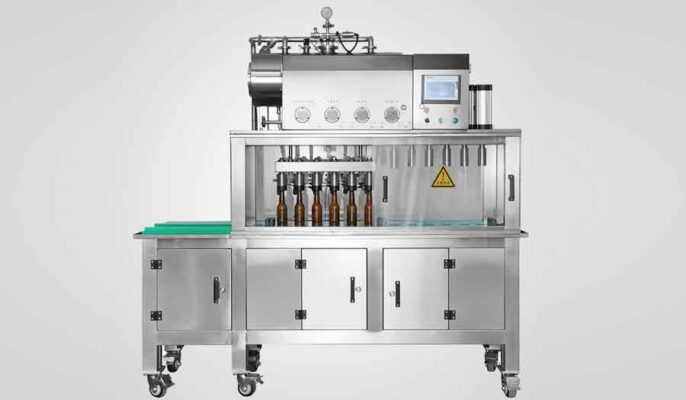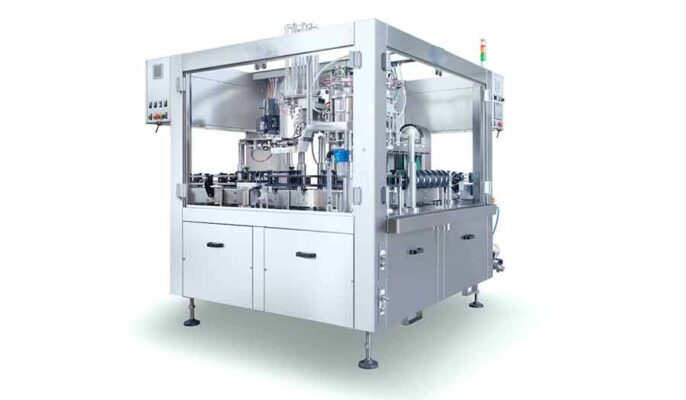Beer bottling is a critical step in the brewing process, allowing both home and commercial breweries to package their delicious product for wider distribution and enjoyment. Beer filling machines play a vital role in the brewing industry, ensuring efficient and accurate filling of bottles and cans.
Beer filling overview
Beer filling may seem like a simple task, but it plays an important role in maintaining the flavor and quality of your beer. The importance of beer bottling cannot be overstated as it ensures that all your hard work in the brewing process pays off with a satisfying drinking experience.
When it comes to beer bottling, attention to detail is key. From choosing the right bottle to understanding the science behind carbonation, every step in the process contributes to the final product. Let’s delve deeper into the world of beer bottling and explore the factors that make it such an important part of the brewing process.
Beer filling equipment
Beer can be bottled from fermenters or kegs with our beer bottling equipment. Small breweries are provided with simple manual equipment for filling beer into bottles, kegs, and other sales packaging, as well as rinsing and sterilizing the packaging, as well as medium and large breweries with automatic machines for efficient Perform filling and rinsing operations.
- Keg
- Bottle
- PET bottle
- Canned food
- Bag-in-box, etc.

Types of beer-filling machines
Gravity beer-filling machine
Gravity beer-filling machines rely on natural gravity to fill bottles or cans. They have a simple design with a water reservoir above the filling station. When a container is placed under the filling nozzle, the liquid flows downward and fills the container. Gravity-based machines are suitable for small-batch operations and are used by small or home breweries.
Counter-pressure beer-filling machine
Counter-pressure beer-filling machines are used in larger breweries and bottling plants. They use a pressurized filling process that minimizes oxidation and ensures consistent carbonation levels. These machines work by first purging the container with carbon dioxide and then pressurizing it to match the pressure in the beer storage tank. The beer is then pressed into the container to preserve its carbonation and quality.
Lsobaric beer-filling machine
Isobaric beer-filling machines are like counter-pressure filling machines but operate . They are designed to fill bottles or cans without interrupting the flow of beer. This type of machine maintains constant pressure during the filling process, allowing for faster productivity. Isobaric filling machines are used in high-speed bottling lines, providing efficiency and precision.
Vacuum beer-filling machine
Vacuum beer-filling machines use a vacuum system to fill beer into bottles or cans. These machines work by creating a vacuum inside the container, which draws in the liquid. Vacuum-filling machines are particularly suitable for filling glass bottles with frothy or carbonated beer because they cut foam and product waste. They are used in craft breweries and specialty beer production.
Craft beer crawler
Crowlers, or can growlers, are popular in the craft beer industry. The Crowler machine is designed to fill 32-ounce or 64-ounce aluminum cans at the point of sale. These compact and portable machines provide convenience and flexibility to small breweries, bars, and brewpubs, allowing customers to take home fresh beer in sealed cans.
How to bottle beer?
When it comes to packaging your beer at the end of the brewing process, there are a variety of options. One of the most popular options is beer in bottles or on tap.
Compared to kegging, bottling is simple and a cheaper option for those starting.
Basic equipment:
- Beer bottles
- Siphon
- Sterilizer
- Bottlebrush
- Fermentable sugars
- Sealing machine or capping machine, etc.
Choose the right bottle
Plastic soda bottles, reuse commercial beer bottles, or buy new bottles from your local homebrew shop. The most important thing to remember when choosing bottles is that they must be designed to withstand the pressure of carbonated drinks. They also need to be cleaned and disinfected.
Nowadays, people usually put the bottles into glass or PET bottles, leave the bottles at fermentation temperature for two weeks, and then put the bottles in the refrigerator.
Beer bottle selection is very important for the storage of home-brewed beer. Most homebrewers collect used beer bottles because they are available and are the most cheap method.
- Second-hand beer bottles in 375 ml and 750 ml sizes
- PET beer bottles with screw caps (usually 740 ml, sold in a box of 15)
- Grolsch style flip top bottles (usually 500ml or 700ml, sold in boxes of 12 bottles)
Cleaning bottles and bottling equipment
Beer bottles, seals, and any equipment that comes into contact with the beer during the bottling process must be cleaned and sanitized. Any dirt or bacteria in the bottle could spoil the beer during storage. The easiest way to clean a beer bottle is to fill a large container with hot water and a cleaning solution of your choice and then “sink” the bottle to soak. If the bottles are dirty, use a bottle brush to scrub the inside of each bottle. After that, rinse the bottle and turn it upside down to drain. Clean the crown seal and equipment in use at the same time.

Check beer before bottle transfer
Before bottling the beer, it is necessary to ensure that the primary fermentation in the fermenter is completely completed. If you bottle beer while it’s still fermenting, you’ll get the dreaded “beer bottle bomb.” Exploding beer bottles are dangerous, can cause serious injury, and can be very messy.
To check your beer, you need to check the specific gravity using a hydrometer or refractometer. The specific gravity must remain the same for at least two consecutive days before bottling. A hydrometer or refractometer is also a great tool for estimating the ABV (alcohol by volume) of your homebrew beer.
Beer transfer bottle
Once you’re sure the primary fermentation is complete and you’ve purged the beer, it’s time to transfer it to bottles.
Care is required when transferring beer from the fermenter to the bottle. You want to avoid oxygenating your beer as much as possible. Using a small bottling machine can reduce the contact between beer and air and also reduce foam problems. The little bottler attaches to the top of the fermenter and has a long tube with a valve on the end. Open the bottle by sliding it up the small bottle filler until the bottom hits the valve. The bottle will start filling. Once the bottle is full, slide the bottle down and the flow of water will stop.
When bottling beer, the bottle needs to be filled to the top, leaving only about 1.5 to 2 centimeters at the top. This will help ensure your beer is carbonated. The larger headspace pressurizes and equilibrates with the carbon dioxide, meaning there is less carbonation in the beer.
Adding fermentable sugar for fermentation
Once the bottle is filled with beer, it’s time to add base sugar to the bottle. Adding starter sugar to the beer bottle provides “food” for the residual/dormant yeast to become active again and ferment the beer a second time. This process will increase your alcohol content by approx. 0.5% and produces CO2 (carbon dioxide). The carbon dioxide released through secondary fermentation has nowhere to go in the sealed bottle and thus remains in the beer, thus carbonating the beer.
Storage bottles
Use a manual capper or benchtop capper (preferred) to apply the crowns with enough force to ensure they are crimped to the bottle. Turn each bottle upside down to make sure it has a good seal. We recommend storing bottles in a covered tub or box in a safe place. This is to ensure that if there’s an explosion, glass doesn’t everywhere. After two weeks it’s time to sample the bottle – put it in the fridge to cool and then if all goes to plan there should be a nice ‘fizz’ when the crown seal is removed. If not, store the bottles longer or move them to a warm place to continue secondary fermentation.
The importance of beer bottling
Proper bottling of beer is crucial. First, it allows you to control your carbonation levels, ensuring your beer has the right amount of fizz and a pleasant mouthfeel. Carbonation adds a pleasant sparkle to your beer, making it appealing and refreshing to drink.
Bottling also provides a protective barrier against oxidation, a process that can affect the taste and aroma of beer. When beer comes in contact with oxygen, it causes the beer to become stale and stale. By sealing your beer in a bottle, you preserve its freshness and extend its shelf life, allowing you to enjoy your beer at its best for longer.




